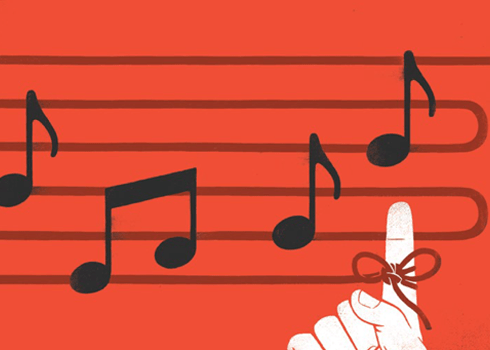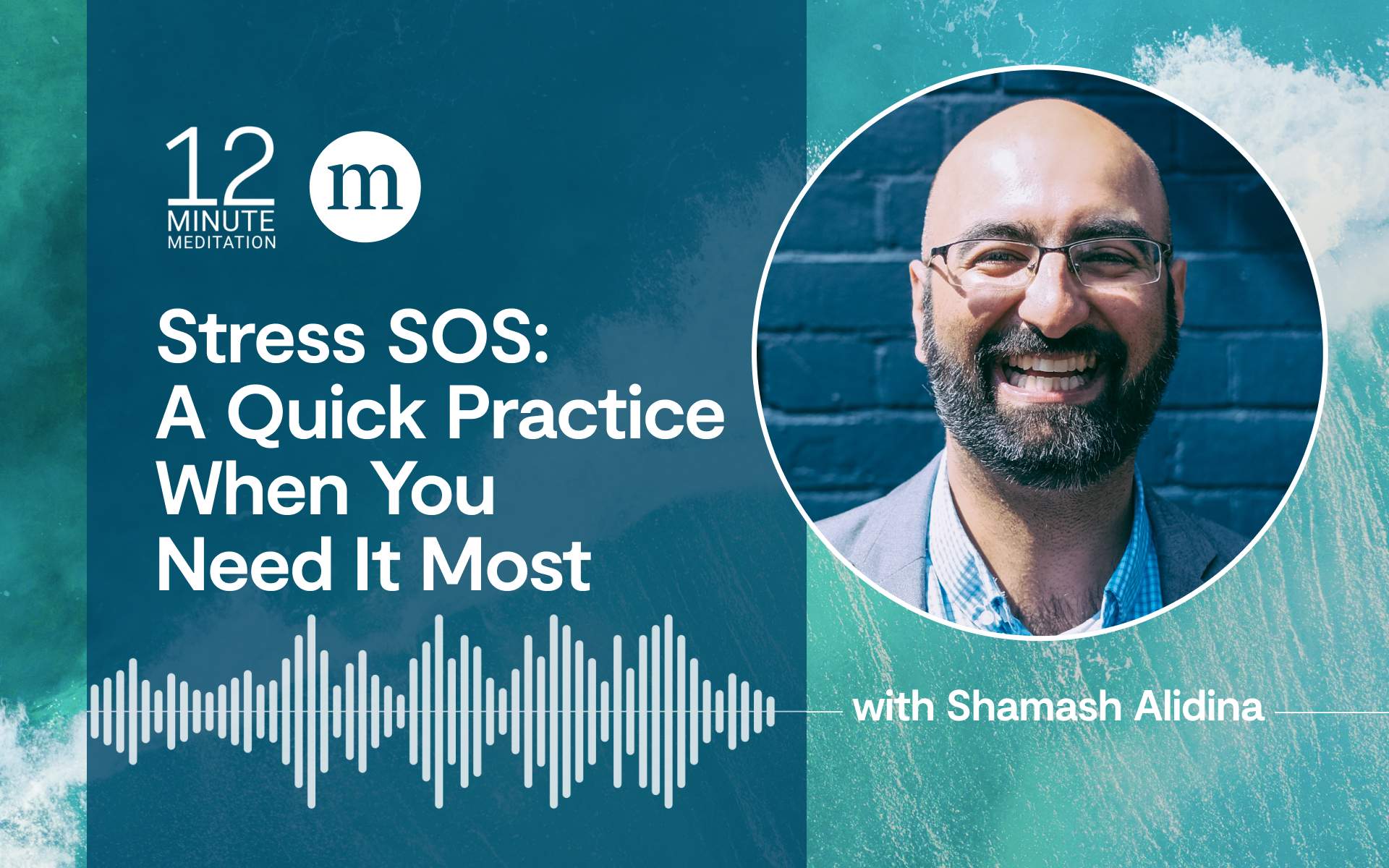Just sit right back and you’ll hear a tale, a tale of a fateful trip… You probably don’t care that I can remember every word and note of the Gilligan’s Island theme song, and you definitely don’t want to hear me sing it. But maybe you’re curious why you, too, can remember many more song lyrics than passages of prose, and even more melodies, and why meaningless sounds arranged in meaningless patterns have the power to calm, energize, frighten, inspire, cheer, or depress you, and sometimes move you to tears. What is it about Samuel Barber’s Adagio for Strings that evokes pathos so reliably that it was played at the announcements of the deaths of FDR and JFK and at the funeral of Albert Einstein, among many others?
The roots of that raw emotional power are sunk deep within the brain, which seems to come pre-wired for music. Long before babies have any significant experience with music, they can detect changes in pitch, tempo, and melodic contour. They can even recognize a tune when it’s played in a different pitch or tempo. According to psychologist Sandra Trehub of the University of Toronto, infants also seem to have an innate preference for sounds, such as perfect fourths and fifths, that we label consonant, but recoil from dissonant sounds. This apparent innateness would suggest that musical understanding has ancient evolutionary roots, and indeed the oldest known instruments—sophisticated flutes made of vulture bones and mammoth ivory found in a cave in Germany—date to 42,000 years ago. Surely our ancestors must have made music, with simpler instruments and their own voices, much earlier.
This long evolutionary heritage has carved out neural systems dedicated solely to music: circuits that process and respond to music seem to be specialized for that and that alone, scientists led by Isabelle Peretz of the University of Montreal discovered. But it’s in the circuitry music shares with other brain functions that neuroscientists are discovering interesting interrelationships.
When we listen to music, our auditory cortices (behind the ears) perceive, analyze, and encode basics like pitch and volume and duration. They then hand off the signal to the secondary auditory cortices, which parse higher-order structure, such as melody and harmony, and also act as a gateway to musical memories: When these structures are electrically stimulated during neurosurgery, some patients hear songs as clearly as if they were wearing earbuds connected to an iPod. The rich storehouse of remembered lyrics, in particular, reflects what’s called dual encoding: When melody accompanies language, it seems to “reinforce the memory trace, ensuring higher quality of encoding and recall,” Peretz and colleagues reported in a 2014 study.
One seemingly miraculous result of that dual encoding— think of it as indexing information under two entries rather than one—is seen in Alzheimer’s patients. For many, a melody can trigger otherwise-lost memories and help form new ones: spoken information is more likely to be remembered if it has a musical accompaniment, Peretz found. Or as McGill University neuroscientist Robert Zatorre put it, “Music has privileged access to memory.”
Memory, it turns out, is the key to music’s emotional power. More than a decade ago studies showed that music considered dissonant activated different emotion-processing brain regions than pieces considered consonant. That was “the first evidence that listening to music recruits emotionally relevant brain regions,” Zatorre said. But it wasn’t just emotion circuits that sprang into action when the first notes entered the brain. The regions in the prefrontal cortex (behind the forehead) that handle higher-order cognitive functions—such as planning and decision-making—also activated and, simultaneously, so did the brain’s very primitive reward circuitry. Our brains are indeed wired, Zatorre said, so that “abstract thought and complex analysis” connect to “the reward regions of the brain,” allowing us to feel pleasure not only from food and sex but also from the complex aesthetics of Louis Armstrong’s What a Wonderful World.
The reward circuits, which run on the neurochemical dopamine, are more complex than their hedonistic shorthand name would suggest: they predict how pleasurable an experience will be. If the experience meets the expectations of the reward-prediction circuitry, dopamine releases and we feel pleasure. If it falls short, dopamine is AWOL and we feel edgy, anxious to try again (the basis for slot-machine addiction). If the experience exceeds expectations, the dopamine hit is even greater and we feel like a birthday kid who got a pony instead of a sweater.
Our emotional responses to music depend on a dance between expectations and reality. The music we hear, beginning at a young age, lays down traces in the auditory cortex. Together these traces form what Zatorre calls templates, patterns of melodies and harmonics. Music we listen to often leaves the most (and most robust) templates. With every note we hear we seek a match in our memory and figure out what musical phrase is likely to come next, comparing what we’re hearing in real time to those templates, “forming continuous expectations of how the next sound will unfold before it is heard,” Zatorre said.
When what we’re hearing fits the stored templates, the musical expectations of the reward-prediction circuits are met. “The listener feels fulfilled after hearing the sound events they expected or craved. Dopamine is released,” Zatorre said. In short, the music moves us. If what we’re hearing is familiar, there’s an exact match to the template in our memory. Once we know a piece, “the predictive factor becomes more enhanced, which has the potential to make that piece even more rewarding,” Zatorre explained—finally giving me a scientific basis for declining invitations to concerts of music I’ve never heard: if I don’t know it, I won’t like it. When we’re listening to a piece for the first time, the match is to the general template for rock or classical or other norms of our culture. The musically unsophisticated (guilty as charged) have fewer stored templates, so they struggle to appreciate new pieces even in a genre they enjoy. Musical sophisticates are more likely to find a partial match between a piece heard for the first time and a musical memory, and so enjoy unfamiliar pieces. Either way, each generation tends to prefer the music they heard in their youth when these expectation templates were forming.
Music activates the analytic region of the brain and the pleasure center simultaneously. We get pleasure not only from food and sex, but also from complex aesthetics.
Zatorre and Valorie Salimpoor (previously at McGill, now at the Rotman Research Institute at Baycrest, University of Toronto) have been investigating the most powerful musical experiences—when a piece sends chills down our spines. In a series of experiments, volunteers listened to music they found the most thrilling, while researchers measured heart rate, respiration, skin conductance, and other indices of emotional arousal. The greater the self-reported pleasure, the greater the emotional arousal. No surprise.
But when brain activity was measured, they found the chill-producing music caused more interaction between the auditory cortices and the reward-prediction circuitry: The reward circuitry constantly checked its predictions against memories of transporting music. Since the human brain has not changed that much in 42,000 years, in all likelihood those cave-dwelling vulture-bone flutists experienced the very same joy and wonder. What music did they recall from their youth? Who can say?
This article also appeared in the December 2014 issue of Mindful magazine.








